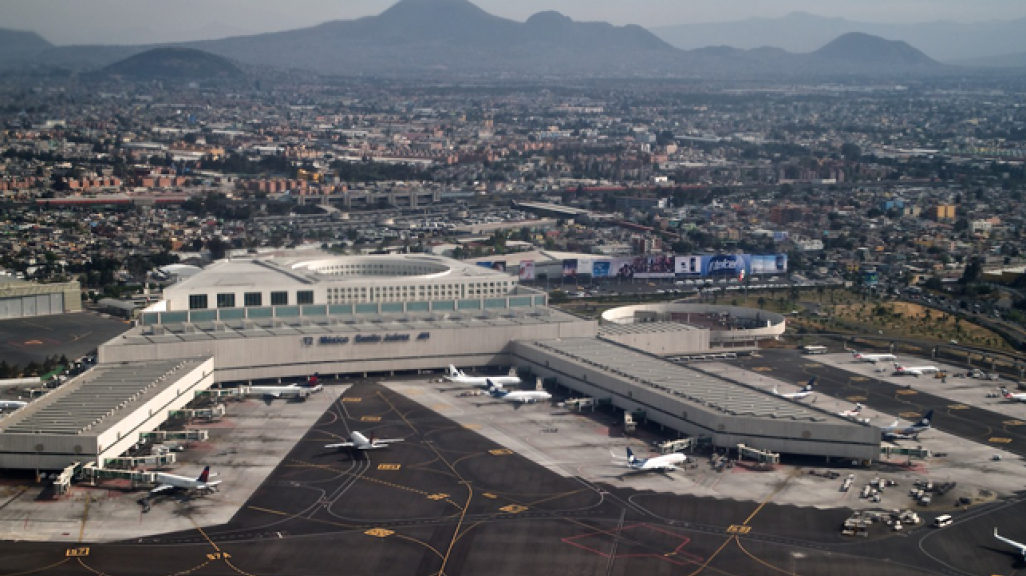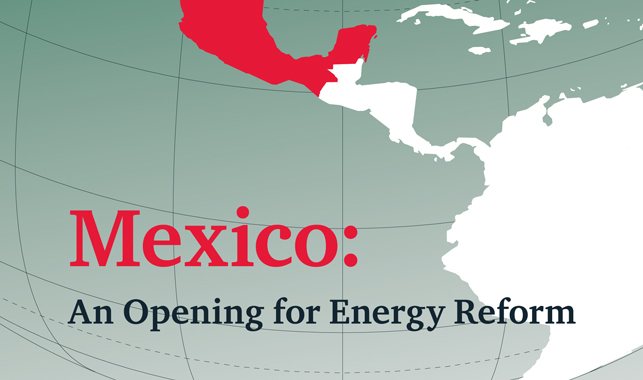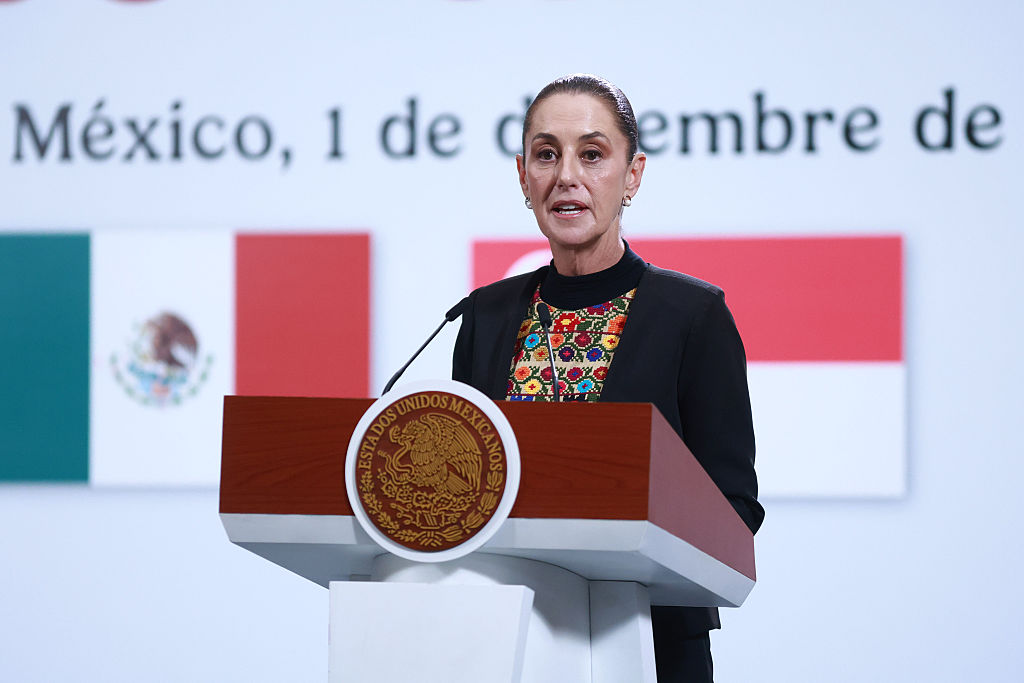Mexico Update: Infrastructure Plans Unveiled
Mexico Update: Infrastructure Plans Unveiled
Mexico’s government is taking on infrastructure to boost the energy, transport, and communications sectors and lay the groundwork for a new airport in the capital.
With the announcement of plans for a new airport in Mexico City, President Enrique Peña Nieto indicated that, with major reforms completed, his government’s next priority will be building infrastructure. “The question that many people ask me is: What next?” Peña Nieto said during his annual state of the nation report in September. “What’s next is putting the reforms into action, so that the benefits can be seen and felt in the daily lives of Mexicans.”
When it comes to infrastructure development, Mexico lags behind other parts of the world and even some Latin American countries. The World Economic Forum’s most recent competitiveness index ranks Mexico sixty-fifth out of 144 countries; Panama (40), Chile (49), and El Salvador (57) all place higher. Some studies even show Mexico’s position dropping among Latin American countries. Mexico went from ranking fifth in 2011 to seventh in 2013 out of 18 Latin American countries, according to Latin Business Chronicle.
In an effort to reverse course, in April 2014 the federal government announced a four-year plan to invest $590 billion in infrastructure. The document detailing the plan mentions that the lack of better infrastructure serves as an impediment to Mexico’s competitiveness. The National Infrastructure Program 2014-2018 includes 743 programs in areas such as energy, land development, transport and communications, health, and tourism.
Below are the flagship projects already unveiled.
Energy: The energy sector will take the biggest share of the investment with $251 billion for 124 projects. This investment will accompany Mexico’s implementation of an energy reform that opens the sector to private investment. Major projects include:
- Los Ramones Phase II gas pipeline is the second phase of the 1,000-kilometer natural gas pipeline, designed to improve supply across northern and central Mexico by bringing it form from Agua Dulce, in the Eagle Ford Shale Formation. Funded by an investment of $2.15 billion, the pipeline will run 669 kilometers from Los Ramones, Nuevo León, to Apaseo El Alto, Guanajuato.
- The combined-cycle Norte III power plant, funded with $1.03 billion, will be located about 30 kilometers south of Ciudad Juarez and add 928 megawatts of installed capacity to the national grid.
- The combined-cycle Guaymas II power plant, which will draw an investment of $725 million, will be located in the state of Sonora state and add 714 megawatts of installed capacity to the national grid.
- The Encino-La Laguna natural gas pipeline will be 423 kilometers in length and transport gas from southern Texas to supply Chihuahua and Durango states. The investment involves $650 million.
Transportation: Investment in transport, including airports, highways, railways, and ports, is expected to exceed $100 billion. Major projects include:
- Mexico City’s new airport is the Peña Nieto government’s landmark infrastructure project. With 403,966 landings and take-offs per year, Mexico City’s current airport is the busiest in Latin America and the twenty-third busiest in the world. “The new airport will be the biggest infrastructure project in recent years in our country, and even, one of the biggest in the world,” said the president. The $9.2 billion airport will include six runways and have the capacity to handle 120 million passengers. The first phase of the project involves the construction of three runways by 2020. British architect Sir Norman Foster and Mexican architect Fernando Romero (also son-in-law of telecom tycoon Carlos Slim) won the international competition to design the new airport in collaboration with Netherland Airport Consultants.
- The Mexico City-Querétaro high-speed rail project calls for a 210-kilometer rail line carrying high-speed trains of 300 kilometers per hour to meet a daily demand of 23,000 passengers. The project will cost approximately $3.3 billion.
- The Mexico City-Toluca interurban train project involves 57.7 kilometers of new railroads running from Mexico City to Toluca and will cost $2.9 billion. The line will have six stations and meet a daily demand of 270,000 passengers.
- The transpeninsular train will run from Merida to Playa del Carmen via Cancún. The project has not been launched yet but according to the transportation ministry, the cost is expected to be around $2.4 billion.
In addition to these infrastructure projects in the fields of energy and transportation, the Federal Electricity Commission will invest $750 million in a new fiber optic cable to provide more connectivity for telecomm operators. The current network has 25,000 km and will be extended to 82,500 km in the next few years. With the expansion of the fiber optic network, the federal government expects to expand internet access to 70 percent of households, up from 42 percent in 2012.
Financing and What the Infrastructure Plan Means for Mexico’s Economy
According to the infrastructure plan, the government will cover 63 percent of the costs and the rest will come from private investment. The new federal public-private partnership law enacted in December 2013 contains several features that will give developers and investors greater certainty to invest in infrastructure, such as a transparent bidding process and clearer rights for investors.
A number of financial institutions have voiced interest in financing Mexican infrastructure. In September 2014, Banamex announced an expansion of its credit portfolio for projects in the energy and infrastructure sectors amounting to $10 billion between 2014 and 2018. An October El Universal article reports that Mexican banks plan to invest $20 billion in energy infrastructure.
However, Mexicans are wary of the government’s pledge that reforms will help the economy grow more quickly, says The Economist. GDP growth hit 1.1 percent in 2013 and is forecast at 2.4 percent in 2014. The government expects that the infrastructure plan will add between 1.8 and 2 percentage points to Mexico’s growth rate by 2018, and create as many as 350,000 jobs per year.









